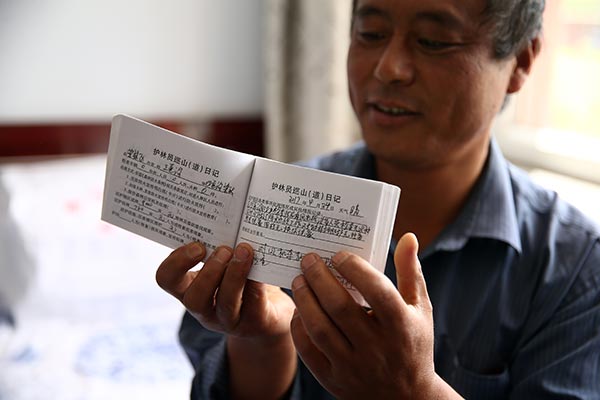 |
|
Liu Guo, 51, with his work diary. [Photo by Zou Hong/China Daily] |
Seasons of change
The scene offers a sharp contrast to what the area was like more than five decades ago, when the forest was non-existent. Zhao Zhenyu, 76, who was at Saihanba in 1962, the forest's first year, knows all about it.
"That winter I was asked to drive some cattle from one part of the forest to another. Soon after I set out, snow started falling… and the wind was lashing hard in my face. Believe it or not, I left about 8 am and didn't reach my destination until about 10 am the next day. I thought I'd never make it."
Zhao was among the 369 people who were there right from the start.
"At moments when it was too cold to walk I thought about abandoning the cattle, but I couldn't because that would have spelled certain death for them. If anything, living with the forbidding winters of Saihanba has made every one of us more respectful of life."
It was with such respect that Zhao and his forestry colleagues planted every tree, a devotion that has never waned.
"You can barely imagine the attention and care we give to each sapling," said Chen, the national forest's deputy director, who came to Saihanba in the 1990s.
"We put a thin layer of soil on top of certain types of saplings, a few millimeters thick. We want to protect the trees without limiting their growth."
In the forest there is specially delineated ground for the cultivation of saplings. A little tree may be just 20 centimeters tall but be in its third or fourth year. Just as Beijing was not built in a day, it has taken three generations for the forest to become what it is now.